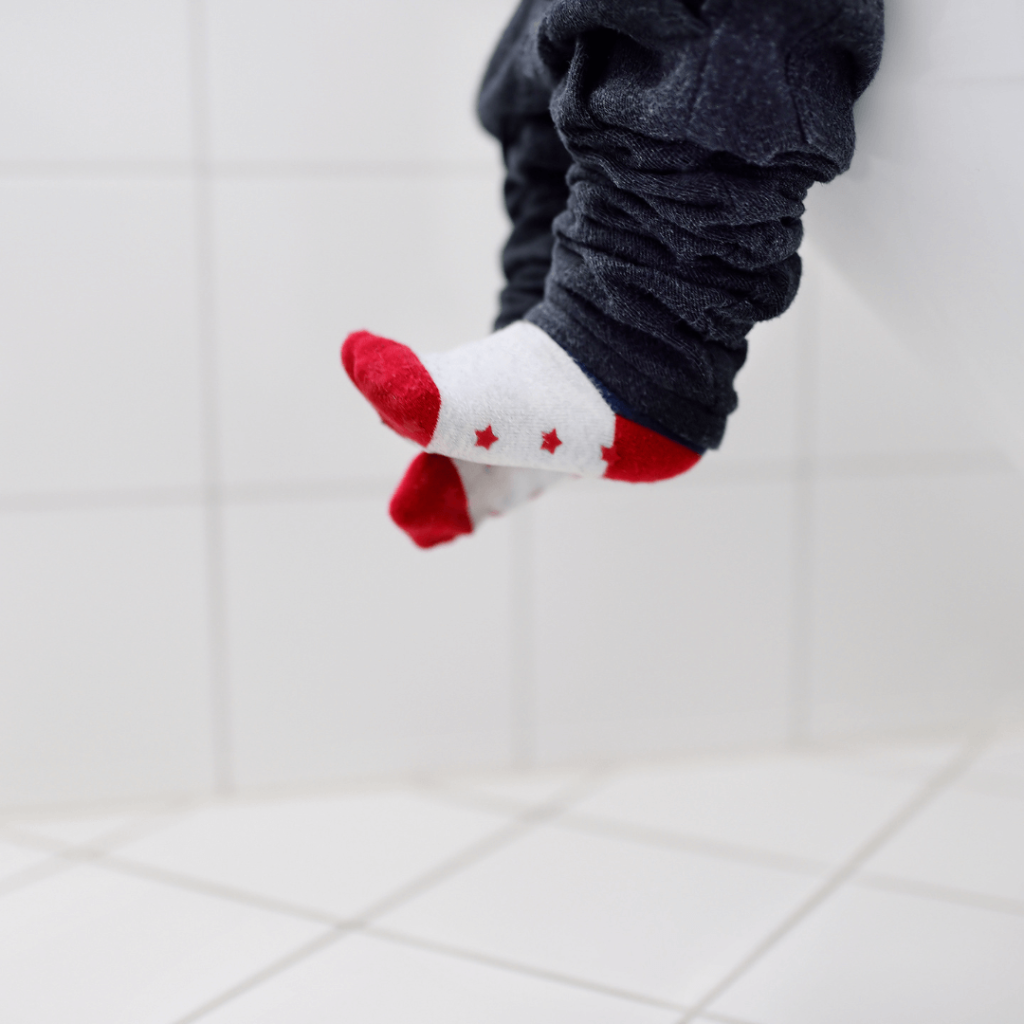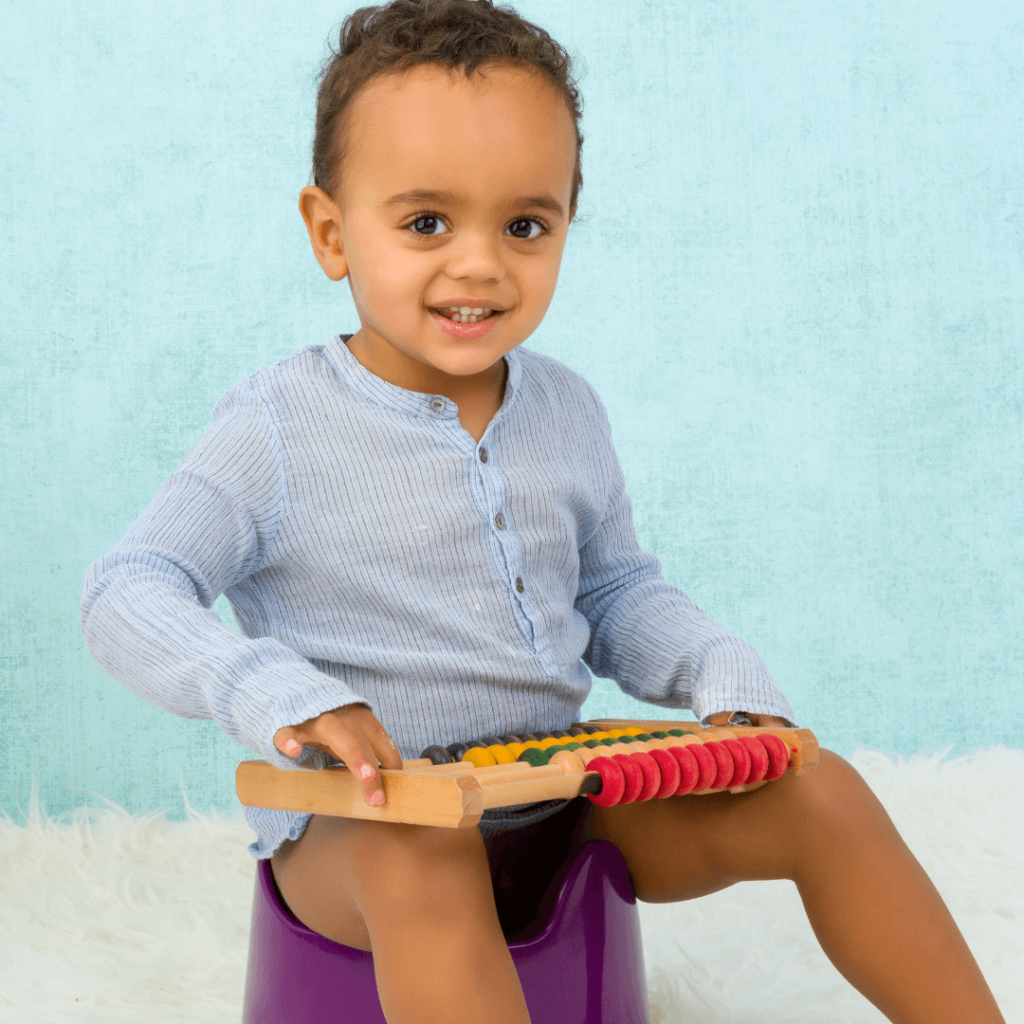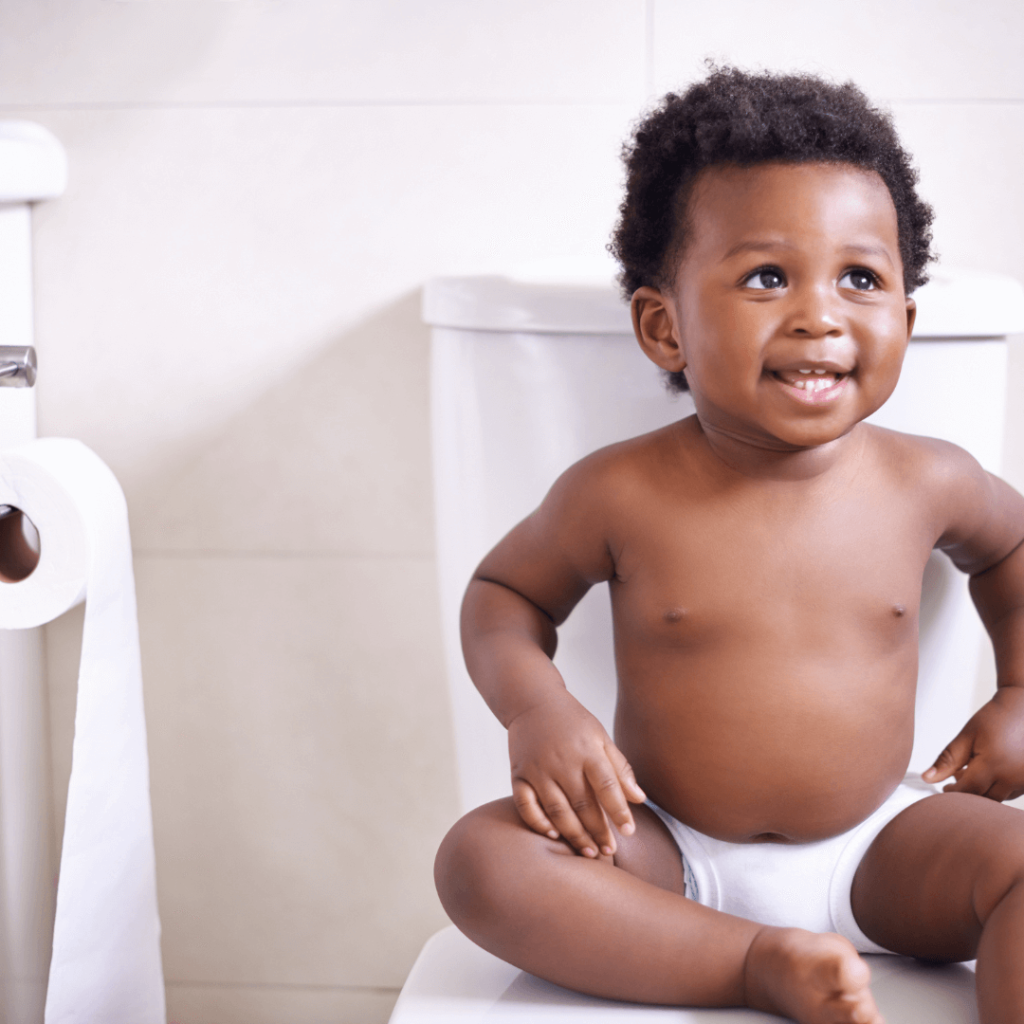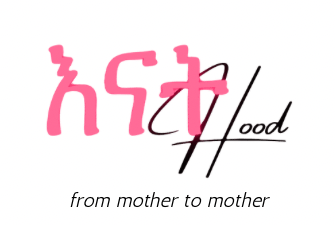
I will be honest potty training was the one thing that made me nervous the most in the motherhood journey. I gave birth in the tub without medication, tandem nurse, and traveled solo internationally with two under three toddlers from the USA to Ethiopia. I did so many things that people find “hard,” but I don’t know for some reason, potty training used to terrify me for several months until I finally did it.
I potty-trained our oldest child and planned to train our youngest soon. So in this post, I will share what helps us and every detail of our experience so you will be encouraged if potty training is scary to you as it was for me.
In this blog, you will find when to start potty training, how to know your child’s readiness, what to prepare, and all the tips that helped me train our son.
When to Start Potty Training
According to the American Academy of Pediatrics (AAP), most children show signs between 18 and 24 months. However, the best time to start potty training is when your child shows signs of readiness. While the age at which children are ready to begin potty training can vary from child to child.
So how can we know a child is ready for potty training? Keep reading …
Understanding Your Child’s Readiness for Potty
Before beginning the potty training process, it’s important to make sure your child is ready. Here are some signs that your child may be ready for potty training :
- Your child can follow simple instructions.
- Your child can communicate when they need to go to the bathroom, such as through words or gestures.
- Your child has regular bowel movements and urinates at predictable times.
- Your child shows an interest in using the toilet, such as by watching family members use it or talking about it.
- Your child can pull down their own pants and underwear.

How to Prepare Your Child, Yourself, and Everybody in Your Home
Preparing for potty training can help make the process smoother for you and your child. Here are some tips on how to prepare your child, yourself, and everyone in your home for potty training:
- Educate Yourself: Read books or articles about potty training to learn about different approaches and strategies that may work best for your child. The more you know about the process, the more confident and prepared you’ll feel.
- Gather Supplies: Stock up on potty training supplies. I have listed all the supplies I used below.
- Talk to Your Child: Start talking to your child about using the potty in a positive way. Explain to them what to expect and use encouraging language.
I started talking to our son a long time ago. We read books together (I included his favorite book below) and had a small potty for him like a toy. He was familiar with the whole potty thing way before, and I noticed it didn’t take him much time once we started the training. So never underestimate the effort of talking to your child. They may not answer while you talk to them, but they do listen.
- Model Good Bathroom Behavior: Let your child watch you or older siblings use the bathroom, so they can see how it’s done and get used to the idea. Whether we like it or not, toddlers love to be with us in the bathroom, right? Let’s welcome them and use it as an opportunity for potty training.
- Set a Routine: Establish a regular potty routine, such as reminding your child to potty at specific times during the day or after meals. Never force, a gentle reminder is enough.
- Encourage Independence: Teach your child how to pull down and up their pants or underwear and wipe themselves. It will give them a sense of independence and help build their confidence.
- Be Patient and Consistent: Potty training can be challenging, so being patient and consistent with your child is key. Appreciate their effort and avoid scolding or punishing them for accidents. Accidents are part of your child’s potty training process and learning opportunities. Accidents taught your child what it is to be wet, start controlling urges, and communicate the need to potty.
- Prepare Your House: Put away any expensive or fragile items your child might accidentally knock over while using the potty. Consider putting down waterproof mats or towels in case of accidents.
- Involve Others: Let caregivers, family members, and babysitters know that your child is potty training, and make sure they understand your approach and routine.
Remember, every child is different, and potty training can take time. Be patient and supportive; your child will eventually get the hang of it.
What to Prepare for Potty Training
Here are some things to prepare for potty training:
- Books: Consider purchasing potty training books to help explain the process to your child and make it a fun and positive experience. P is for Potty is the favorite book in our house.
- Potty Seat: Purchase a child-sized potty seat that is comfortable and easy for your child to use.
- Underwear: Stock up on child-sized underwear that is easy for your child to pull up and down. I used this leak-proof training underwear.
- Wipes: Keep a supply of wet wipes nearby for cleaning up accidents.
Potty Training Methods
One common potty training method is “elimination communication,” or EC. It’s a natural and intuitive approach that involves paying close attention to your child’s signs of needing to use the bathroom and helping them to do so at the right time. This method relies heavily on the parent’s intuition and observation, and it’s particularly useful for babies and very young children. If you’re interested in EC, you can read it በዚህ ሊንክ in depth.
Another method is “potty training in three days” (PT3), which involves intensive potty training over a short period. This method is based on the idea that children are capable of learning to use the potty quickly and can be trained in just a few days. It requires a lot of focus and commitment from both parent and child but can be effective for children who are ready and willing to learn.

Potty Training
The first step is introducing the concept of using the toilet or potty to your child. You can do this by reading books about potty training, showing them videos, or letting them watch older siblings or family members use the toilet.
Next, you should provide your child with a potty or a seat that attaches to the toilet. Let them become familiar with it and encourage them to sit on it clothed, even if they don’t go.
As your child becomes more comfortable with the potty or toilet seat, you can encourage them to use it when needed. Be sure to appreciate them when they use it, even if they don’t go.
It’s also essential to establish a regular potty routine. This can include going to the bathroom after meals, before and after naps, and before leaving the house.
In addition, it’s important to be patient and not to pressure your child. Potty training can be frustrating, and children can become resistant if they feel pressured. It’s also good to remember that every child is different and may take longer than others to train fully.
As I said above, there will be accidents during potty training. Don’t get discouraged or angry, instead, stay positive and encourage your child. Clean up accidents with a positive attitude, and remind your child that it’s normal. Using positive reinforcement can be helpful during potty training.
Another important aspect of potty training is teaching your child how to wipe correctly. Teach them to wipe from front to back and to use toilet paper or wipes to clean themselves.
Lastly, remember that every child is different; some may only be ready for potty training later. It’s also important to be patient and supportive during the potty training and avoid pressuring your child or punishing them for accidents.
Do you have questions about ? How was your experience training your child? Let us know in the comment below.

Thank you for this Haniye. I have been overwhelmed even by the thoughg of it for a while now. This is very helpful 💛
Hello,
It’s helpful . I will start with my child using your tips . Thank you
Hi Meseret, I am glad you found the potty training article helpful. Good luck! Please come back and share your experience with us. Thank you.